21 F. average high on January 20.
29 F. high on January 20, 2015.
January 21, 1936: Warroad drops to a bone-chilling 55 below zero.
January 21, 1922: The barometer at Collegeville hits 31.11 inches, a record high pressure reading for the state.
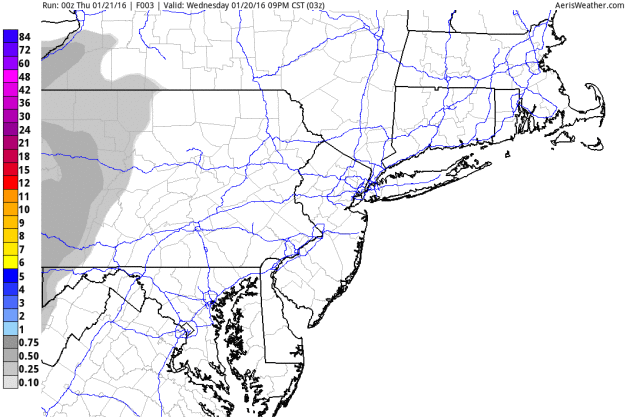
Quiet Pattern Here - "Snowmageddon" Out East?
"Snowflakes are one of nature's most fragile things, but just look what they can do when they stick together" wrote Vesta Kelly. According to the Michigan Science Center every winter at least one septillion (1 followed by 24 zeroes) snowflakes fall from the sky.
"Snowflakes are one of nature's most fragile things, but just look what they can do when they stick together" wrote Vesta Kelly. According to the Michigan Science Center every winter at least one septillion (1 followed by 24 zeroes) snowflakes fall from the sky.
A
significant percentage of those perfect crystals will hurl themselves at
the East Coast this weekend, as the biggest storm of the winter roars
up the coast. Sea surface temperatures are still abnormally warm, while
surface temperatures should be cold enough for all snow from Washington
D.C. to New York. Some 1-2 foot amounts are likely by Sunday. If you're flying east see if you can get in no later than midday Friday.
Coastal flooding, power outages; the first Blizzard Watch for DC since 1986. Why should they have all the fun?
El Nino often nudges the storm track south of Minnesota; nothing but a parade of scrawny clippers for us - maybe a coating Monday.
Temperatures approach 30F this weekend; again next week. No cold
blasts. While an epic blizzard shuts down the northeastern USA.
Seems a little unfair huh?
Snowfall Predictions.
Latest 12 KM NAM guidance from NOAA continues to print out a blizzard
for much of the Mid Atlantic Region; the heaviest (2 foot plus) amounts
just north and west of Washington D.C. and Baltimore - another snowy
bullseye over central and northern New Jersey. Washington may still pick
up nearly 20", with a potential 12-18" in New York City. Stating the
obvious: travel will be non-existant by land and air late Friday into
Sunday; many people will be stuck in their homes for 72 hours. The
saving grace: Snowmageddon, the Sequel is hitting on a weekend, and
there has been plenty of warning. Map: AerisWeather.
* The Washington D.C. office of the National Weather Service isued a Blizzard Watch for the first time since 1986.
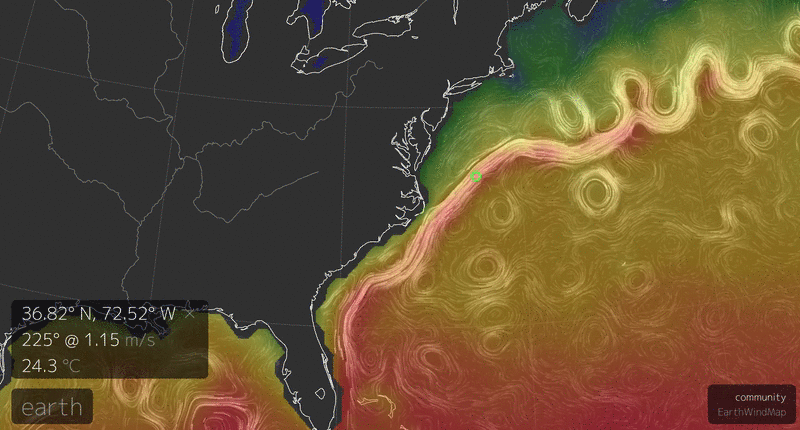
Like Pouring Rocket Fuel on a Bic Lighter.
Yesterday I was amazed to see SST (sea surface temperatures) as warm as
mid to upper 70s in the Gulf Stream, just 150 miles east of Norfolk,
Virginia. I'm no oceanographer but that seems very warm for late
January. The additional warmth in the Pacific will increase water vapor
available for this storm, pulling it into a rapidly intensifying
Nor'easter, more fuel for extreme snowfall amounts from Washington D.C.
to New York City. It's not a Nor'easter but a More'easter.
SST map: earth.nullschool.net.
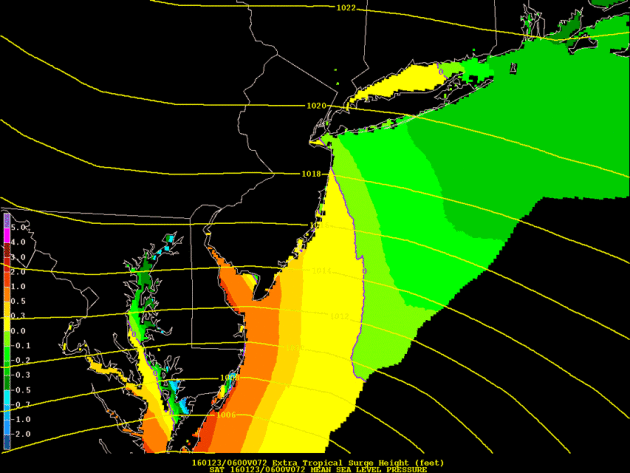
Animation credit: "Forecast storm surge from this weekend's winter storm." Credit: Ocean Prediction Center.
Timing the storm. Here is a sequence of future radar maps from Aeris Weather, showing the progression of snow (heaviest snow is shaded in purple, light snow in blue):





Map credit: MPCA.

Analysis: How 2015 Became the Hottest Year on Record. Carbon Brief takes a look at how global temperatures and trends are measured; here's an excerpt: "...As
well as being a symptom of the long term warming trend, scientists are
interested in 2015 global temperature because of what it tells us about
how natural fluctuations in the climate can act to amplify or dampen the
warming signal, Osborn explains. A huge El Niño in the Pacific – among the biggest on record
– contributed to the record warmth in 2015, say scientists. In
total, 10 out of the 12 months in 2015 either tied with or broke
previous records, according to NASA and NOAA’s joint analysis. Since the El Niño only recently reached peak strength, scientists expect its impact to be even larger in 2016..."
Graphic credit above: "Global
average surface temperatures in the three major global datasets, all
relative to the 1961-1990 average: Met Office/University of East Anglia
(blue), NASA (orange) and NOAA (red)." Credit: Rosamund Pearce, Carbon Brief.
2015: Hottest Worldwide, Second Hottest in the USA on Record. Details via The New York Times.
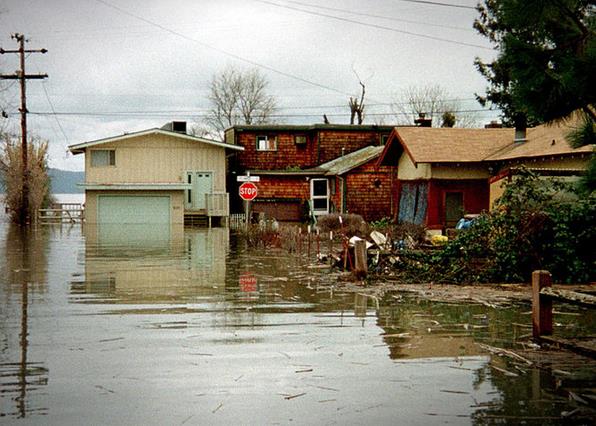
Unusual El Nino Weather May Increase Risk of Water Damage to Homes This Winter. A different angle in this story at Yahoo News; here's a clip: "...Winter
is already a challenging season for many homeowners, but the moisture
from El Niño will likely create additional headaches this year," said
Paul Quinn, head of claims customer experience at Farmers Insurance.
"This year's unique weather conditions mean we may see hazards like
flooding and power outages combine with more traditional winter hazards,
like ice dams and frozen pipes, as major concerns for homeowners." El
Niño, which is characterized by unusually warm temperatures in the
Pacific Ocean, is expected to create wetter-than-average conditions in
the South, the Mid-Atlantic and southern portions of New England, as
well as in California, Texas and Florida. Homeowners in these areas will
likely have to contend with an increased risk of flooding, water damage
and power outages..." (File photo: Dave Gatley, FEMA).
10 Billion Dollar Weather and Climate Disasters in 2015. Here's an excerpt from NOAA: "...The U.S. has sustained 188 weather and climate disasters since 1980 where overall damages/costs reached or exceeded $1 billion (including CPI adjustment to 2015). The total cost of these 188 events exceeds $1 trillion. In 2015, there were 10 weather and climate disaster events with losses exceeding $1 billion each across the United States. These events included a drought event, 2 flooding events, 5 severe storm events, a wildfire event, and a winter storm event. Overall, these events resulted in the deaths of 155 people and had significant economic effects on the areas impacted. The 1980–2015 annual average is 5.2 events (CPI-adjusted); the annual average for the most recent 5 years (2011–2015) is 10.8 events (CPI-adjusted). Further cost figures on individual events in 2015 will be updated when data are finalized..."
15 Before-And-After Images That Show How We're Transforming the Planet. Vox has a terrific photo-essay; here's an excerpt: "...One of the most dramatic ways we're transforming the planet is through global warming. And a great place to see its effects is through the melting of glaciers and ice sheets around the world. The images above show the Columbia Glacier in Alaska, which flows directly into the sea. The glacier had stayed more or less fixed in place between its discovery in 1794 and 1980, but then suddenly began shrinking. Between 1986 and 2014, its nose had retreated 12 miles north, making it one of the fastest-receding glaciers in the world..."
Image credit above: "Alaska's Columbia Glacier, seen on July 28, 1986 and July 2, 2014." (NASA, Images of Change)
Photo credit: National Geographic, which has more background on the global spread of algal blooms here.
How the "Perfect Storm" Became the Perfect Cop-Out. Here's a link to the New York Times Magazine.
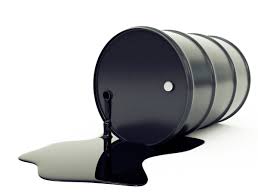
Amidst Drop in Oil Prices, U.S. Navy Deploys "Great Green Fleet". Reuters reports: "The U.S. Navy will formally deploy its so-called "Great Green Fleet" on Wednesday, sending warships to sea on biofuels even though oil prices have dropped 70 percent since congressional Republicans first criticized the high cost of alternative fuels. Navy Secretary Ray Mabus told Reuters the deployment is the next step in a fleet-wide effort that has seen the Navy cut its oil consumption by 15 percent since he took charge in 2009 and the Marine Corps curb its use by 60 percent. A focus on energy and energy-saving technology gives the U.S. Navy a military advantage, Mabus said..."
Photo credit above: "A cyclist rides his bicycle during “No Car Day” in Bogota, 2015. The event was organized to encourage residents to use other modes of public transportation to help reduce the amount of pollution." Photograph: Jose Gomez/Reuters
Map credit above: "Blue: Alcohol is not prohibited. Red: Alcohol is prohibited. Yellow: Some alcohol controls/alcohol prohibited in some municipalities." Data from March 2012. (Photo: Public Domain/Wikipedia Commons).
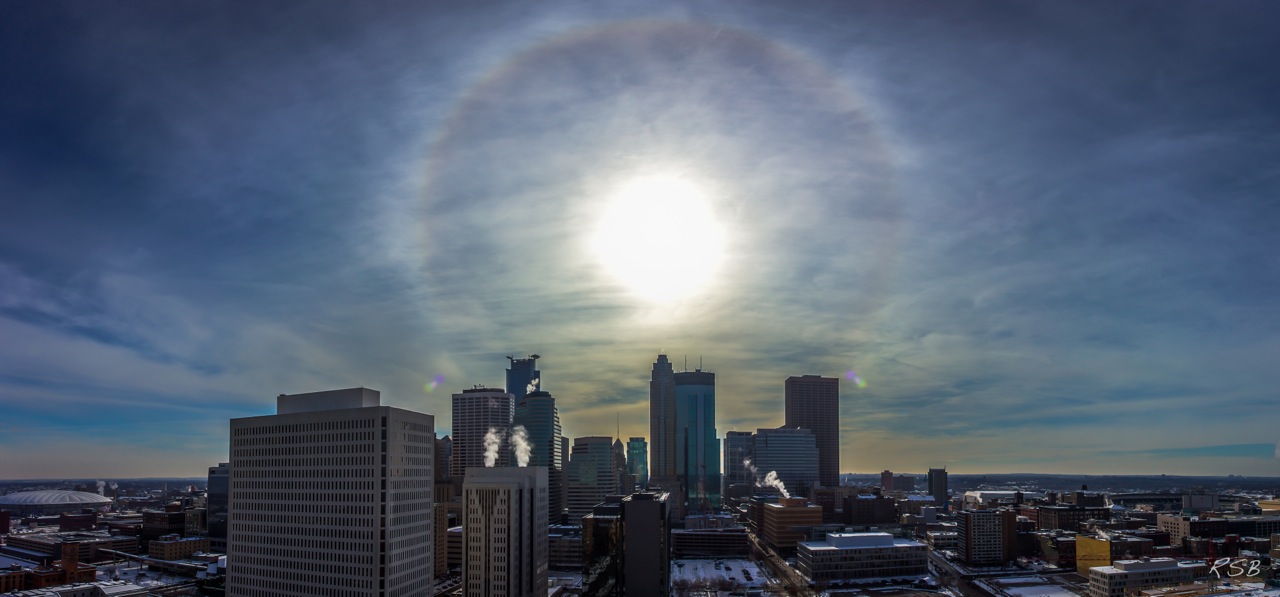
TODAY: Gray, coating of snow. Winds: NW 3-8. High: 23
THURSDAY NIGHT: Flurries taper. Low: 12
FRIDAY: Sunshine returns, still chilly. Winds: N 7-12. High: 20
SATURDAY: Partly sunny, a bit milder. Winds: S 10-15. Wake-up: 8. High: 27
SUNDAY: Mostly cloudy, feels pretty good. Winds: SW 5-10. Wake-up: 20. High: 31
MONDAY: Light snow, coating to 1" possible. Wake-up: 22. High: 27
TUESDAY: Partly sunny, no travel worries. Wake-up: 14. High: 23
WEDNESDAY: Milder, few flurries around. Wake-up: 17. High: 31
22-degree halo photo above courtesy of Steve Burns.
Climate Stories...
Photo credit above: "Wildfires devastated large parts of California and the West, which has been suffering from a historic drought." Max Whittaker/Reuters.
Photo credit above: "Exxon Mobil, which operates a refinery in Torrance, above, has issued statements denying news reports that it suppressed climate-change research." (Christina House / For The Times).
Pentagon Ordered to Address Climate Change. Here's the intro to story at The Washington Free Beacon: "A new directive issued by Pentagon leaders mandates that the agency work to “assess and manage risks associated with the impacts of climate change,” according to a copy of the Jan. 14 directive issued by Deputy Secretary of Defense Robert Work. As the Obama administration focuses on a larger effort to push its climate change agenda, the Pentagon will now “address the impacts of climate change.” This includes engaging in “deliberate preparation, close cooperation, and coordinated planning” to “improve climate preparedness and resilience,” according to the directive..." (File photo: Wikipedia).
Climate Change and Minnesota Agribusiness: a Reason for Hope. I've personally witnessed much more attention being paid to climate volatility from General Mills, Cargill and other Minnesota-based companies. Here's another perspective in an Op-Ed at Minnpost: "Too often big business is written off as an environmental problem, without exploring its potential as a tool for progress. Agribusiness must be part of the solution for climate-change adaptation, especially for smallholder farmers in the global south. Right now, the fields in Minnesota may be covered with snow, but according to social responsibility reports, corporations like Cargill and General Mills are helping farmers in developing countries improve their livelihoods. Conscious consumers should demand more information about these programs to determine if they are creating the social impact they claim to generate..."
Photo credit above: CC/Flickr/David Wright. "Agribusiness is a leading contributor to climate change. The industry and lawmakers should do more to address this issue and support the farmers most affected by our carbon-intensive lifestyles."



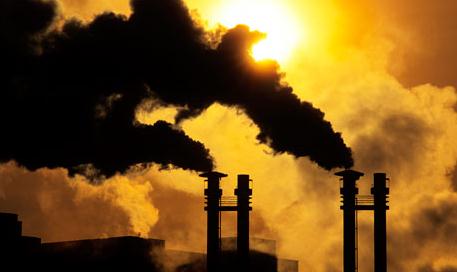
3rd Annual Minnesota Climate Adaptation Conference on January 28. If your state agency or business is already seeing impacts from a more volatile climate you should consider attending - a few spots are still available. Here's more information on who, what, where and why from Dr. Mark Seeley:
"We are trying to nurture an educated community of practitioners when it comes to climate adaptation and sustainability, and we are slowly succeeding. In past statewide conferences we have heard from a number of academic researchers and government practitioners concerning sustainability strategies and procedures that give consideration to climate change, but this year we will hear more from the business and corporate community (morning plenary session on climate adaptation and sustainability), as well as a panel of city mayors in the afternoon plenary session.
The CAP Conference will take place on January 28, 2016 at the Doubletree Hotel in Brooklyn Center, MN. Many of the presentations and discussions will center on the need for sustainability as an underlying principle when it comes to considerations of climate change and how it will affect management of our natural resources, our societal infrastructure, and the future of products and services from the highly competitive corporate world This would be a valuable discussion for our wider community to hear, and perhaps even foster some closer working relationships among the partnerships of practitioners we are trying to build."
More information and a link to online registration is here.
Church of England and New York State Fund to Press Exxon on Climate Change. Here's the intro to a Wall Street Journal story: "New York’s state pension fund and the Church of England, both investors in Exxon Mobil Corp. , plan to file a shareholder resolution demanding the largest U.S. oil company assess the impact on its business of climate change policy. The shareholder resolution would require Exxon to conduct an assessment of how its business would fare in the event governments take various actions to limit global warming. Government attempts to tax or put a price on carbon, for example, could affect the viability of some of Exxon’s long-term investment plans, said Edward Mason, head of responsible investing for the Church of England, which has a portfolio of about £10 billion ($14.44 billion)..."
Photo credit above: "A view of the Exxon Mobil refinery in Baytown, Texas." Photo: Reuters.
Illustration credit above: "Pacific and Atlantic meridional sections showing upper-ocean warming for the most recent complete decade. Red colors indicate a warming (positive) anomaly and blue colors indicate a cooling (negative) anomaly." (Source: Timo Bremer/LLNL)
* More perspective on the massive amounts of heat going into the world's oceans at Discovery News.
NPS Drone Checks Arctic Ice Loss. The Monterey Herald has an interesting story about new technologies being deployed to monitor ice loss; here's the intro: "When
you are flying a drone over the Arctic ice cap you need warm clothing
and armed sentries to ward off prowling polar bears. Naval Postgraduate
School polar meteorologist and professor Peter Guest spent more than 40
days late last year as the only scientist from NPS in a group from the
U.S. and other countries researching the region’s receding ice cover.
It’s a part of the world the United States and other nations are showing
great interest in. Russia renewed its claim to a United Nations
committee on the Arctic, a region potentially rich in mineral resources,
which the U.S., Canada, Denmark and Norway are also laying claim to..."
Photo credit above: "Naval Postgraduate School polar meteorologist and professor Peter Guest works with a drone in the arctic." Photo by Byron Blomquist.
What's Melting Greenland's Ice Sheet? Night Clouds, say Scientists.
Clouds keep daytime temperatures cooler, but result in warmer nights,
trapping additional radiation near the ground. Here's an excerpt from Christian Science Monitor: "Clouds play an important role in melting Greenland’s ice sheet, say scientists.
A team of scientists from the University of Leuven in Belgium have found that clouds are raising the temperature of the Greenland Ice Sheet by up to 3 degrees, contributing to almost 30 percent of the sheet’s melting, according a study published Tuesday in the journal Nature Communications..."
A team of scientists from the University of Leuven in Belgium have found that clouds are raising the temperature of the Greenland Ice Sheet by up to 3 degrees, contributing to almost 30 percent of the sheet’s melting, according a study published Tuesday in the journal Nature Communications..."
Photo credit above: "Heimdal
Glacier in southern Greenland is seen in a NASA image captured by
Langley Research Center's Falcon 20 aircraft October 13 and released
November 24. NASA's Operation IceBridge North is an airborne survey of
polar ice aimed at learning how much snow and ice disappeared over the
summer, according to a NASA news release." John Sonntag/NASA/Reuters.
No comments:
Post a Comment